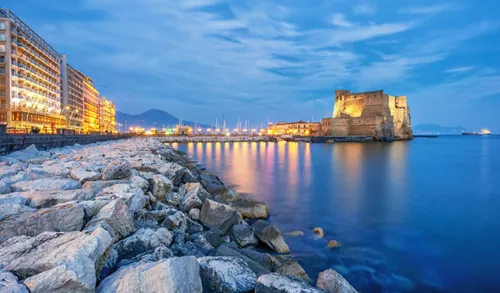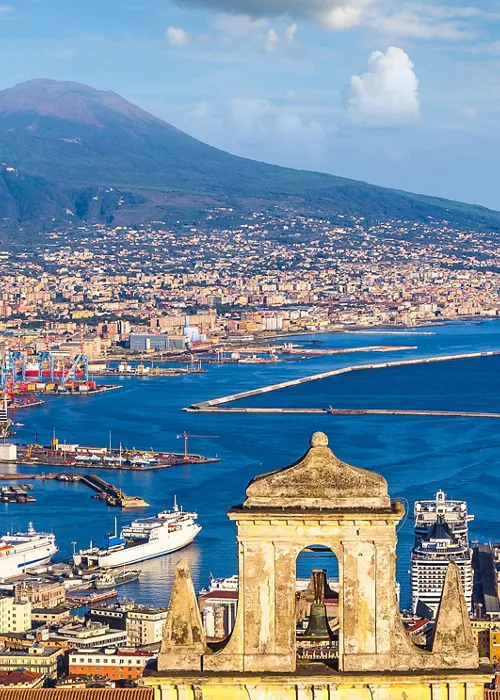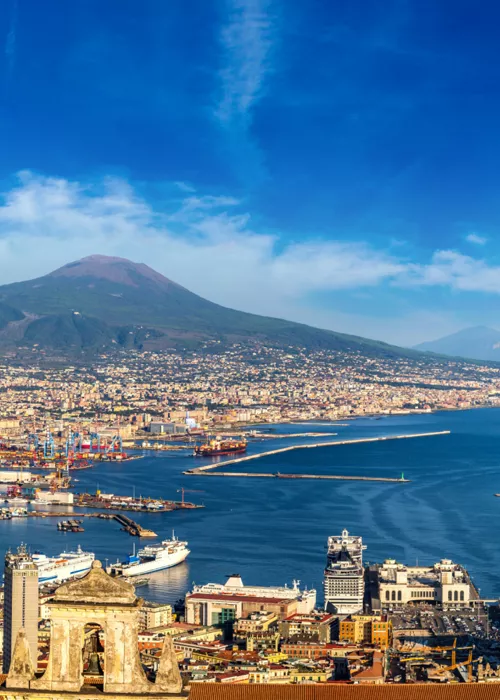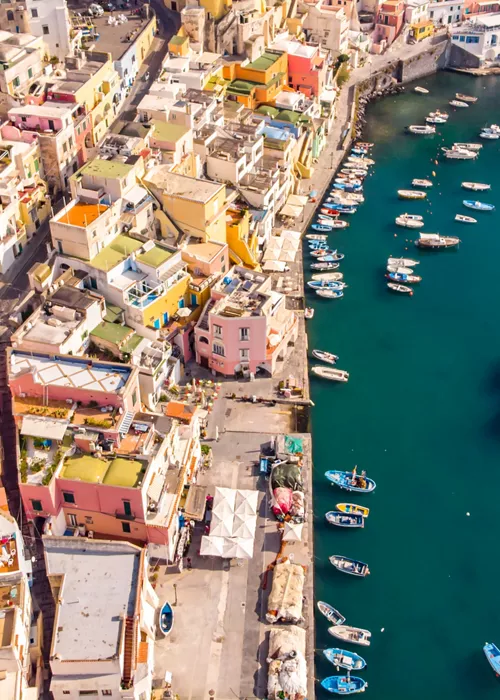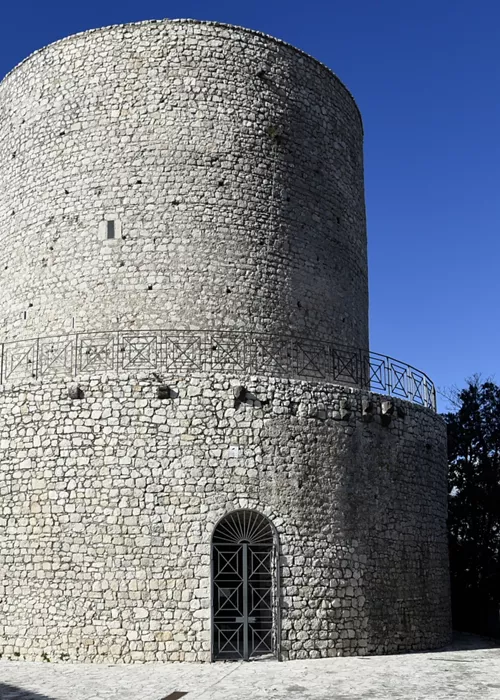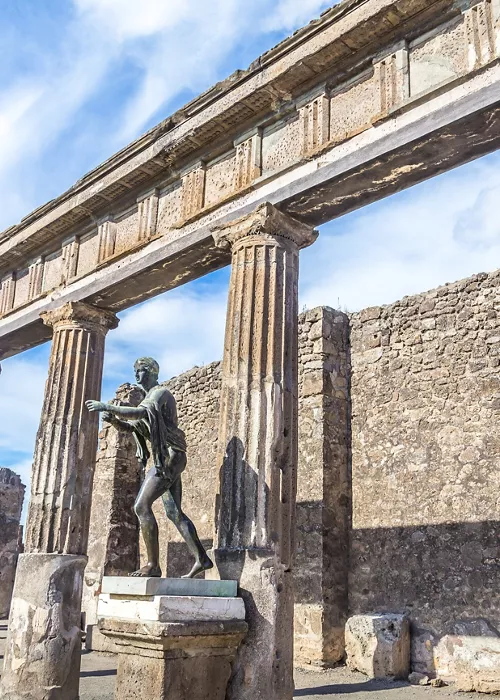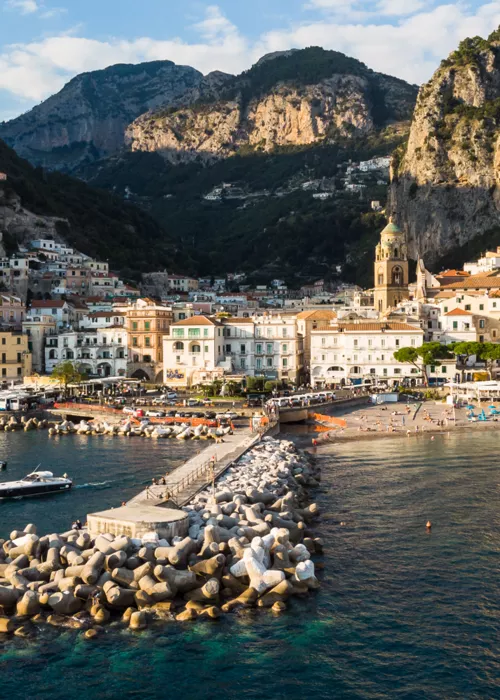Naples and pizza, the infamous love story
3 minutes
It is such a popular meal that even if just passing through Italy for a few hours, everyone wants (and should) try one: it’s a meal that makes for pure joy with every bite.
Naples and pizza are closely linked: let's see why.
Some insight into the history of pizza
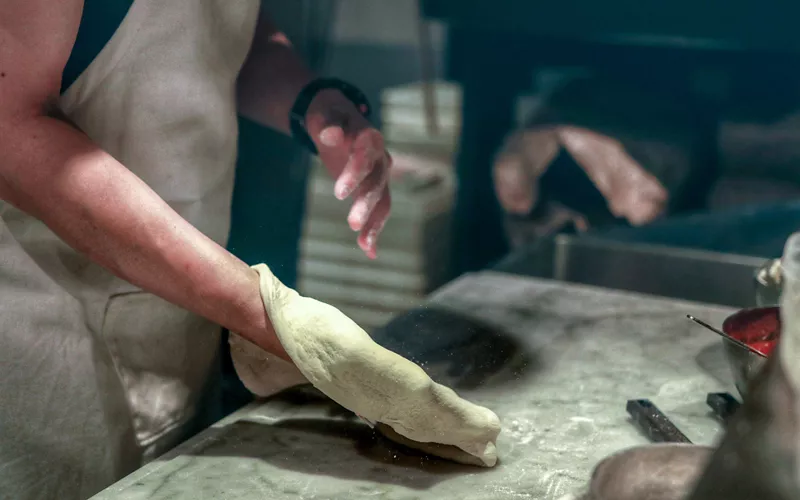
As far as a timeframe is concerned, it’s difficult to establish how far back ancient cereal-based round flat breads date. You could possibly find something similar from ancient Egypt times, as well as in pre-Columbian America.
But pizza as it’s known today, with dough made of water, flour, yeast and salt, and topped with tomato, mozzarella and basil, certainly comes from Naples. This version most likely doesn’t date back to much before the end of the eighteenth century.
The happy marriage of tomato and mozzarella

It couldn’t be otherwise, as it was then that the use of tomatoes began to be widespread in the kitchen. The fruit discovered in the New World had arrived in Europe in the sixteenth century, but for a long time it had been used more for ornamental purposes, found to be barely edible.
When it became considered a "poor" ingredient, it was combined with mozzarella, which was also available cheaply. The combination was a success, also due to the organoleptic characteristics that make them a perfect couple. They have similar notes, which lend well to each other, such as acidity, and other contrasting ones which are balanced, such as the sweetness of the tomato and the fat content of the dairy.
Pizza, the queen, the legend

You may have heard the legend of the Margherita pizza which was invented in Naples in 1889. Pizza chef Raffaele Esposito was invited to present something unique to the sovereigns who were staying in the palace of Capodimonte, during a visit to the city of King Umberto I of Savoy.
On the occasion, Esposito prepared three types of pizza, including one topped with tomato, mozzarella and basil. Queen Margherita so impressed by the latter that the pizza chef decided to name it after her.
In reality however, it is indeed a legend. Pizza like that had been made for some time in the Campania capital, as Francesco de Bourcard states in his book Usi e costumi di Napoli e contorni descritti e dipinti, (Uses and customs of Naples, described and illustrated) published in 1853. The author explains that for decades tomato pizzas with slices of mozzarella arranged “in margherita flower” had been baked.
And Raffaele Esposito? Perhaps having had the foresight to serve an already common pizza and naming it after the Queen making it destined to go down in history is due to him. That's probably why the best known pizza in the world is called pizza margherita.
Naples is the universal capital of pizza

However things went, the tradition would have continued regardless. The traditional art of the Neapolitan pizza maker has since become an intangible UNESCO heritage. Today Naples is in fact considered the world capital of pizza. This did not happen for the uniqueness of its water. Let's dispel another legend, the city is supplied by more than one aqueduct. It is due to the dedication and skill of the pizza chefs and what Neapolitans call "white art", or the art of kneading.
Pizza is made of simple ingredients following a rather linear but quite difficult process to standardize and keep under control. This has been the skill of Neapolitan pizza makers over the centuries.
Even talking about Neapolitan pizza is an approximation, in the city there are at least three different types. The "ruota di carretto" (wheels on a cart), very wide and thin; the "classica" (classic), a little smaller and with a slightly wider crust; and finally “a canotto” (dinghy), which has a much wider fatter crust.
To get an idea of which one you prefer, we can only recommend that you go in person and try one of the hundreds of amazing pizzerias in the city. With only one certainty, you won’t be disappointed.







